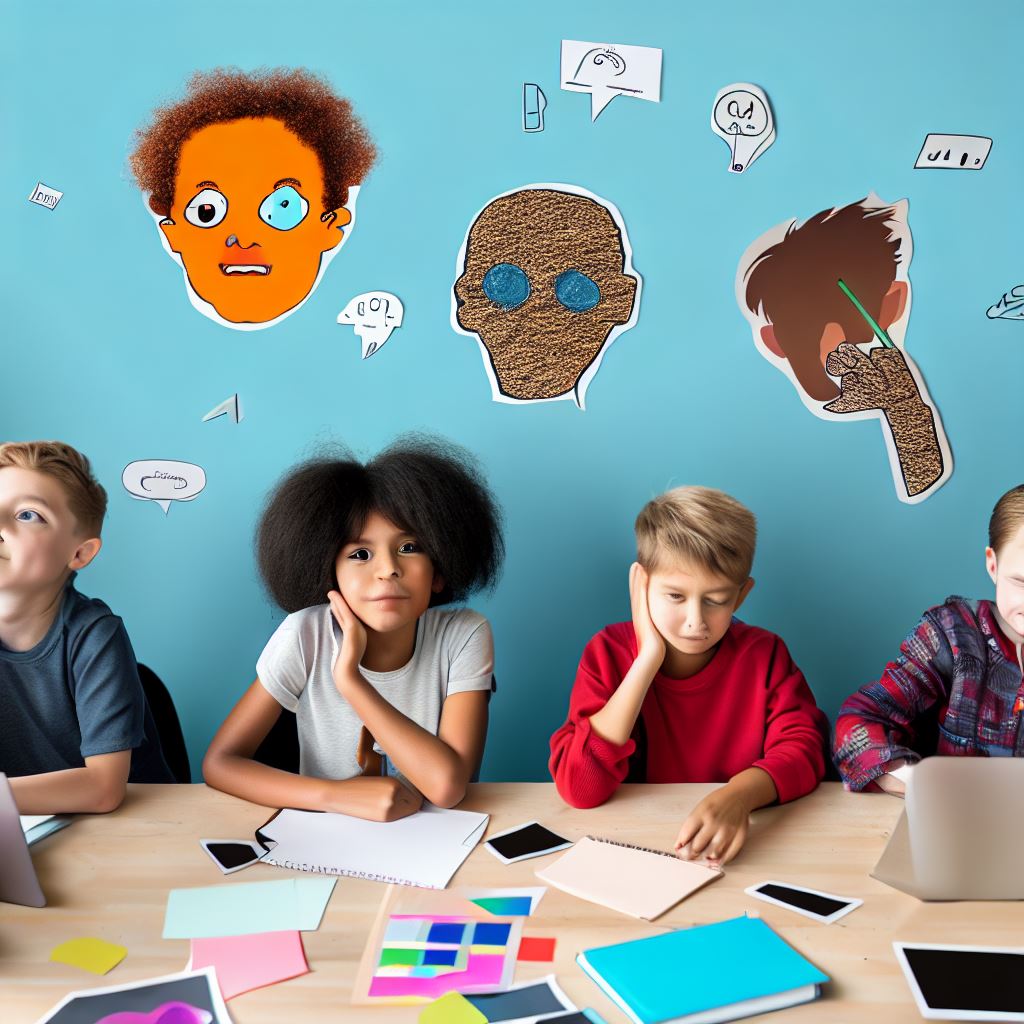Introduction
The rising popularity of text-based coding and the benefits of transitioning from Scratch to Python Coding
The world of coding has experienced a significant shift in recent years, with the increasing popularity of text-based coding languages such as Python.
This transition from visual programming platforms like Scratch to text-based coding brings numerous benefits that are worth exploring.
Text-based coding languages like Python find extensive use in advanced programming concepts and real-world applications.
By learning text-based coding, individuals can grasp complex programming concepts and develop a deeper understanding of how code works.
In contrast, Scratch is a visual programming language specifically designed to instruct coding fundamentals to beginners.
While Scratch does serve its purpose in introducing coding concepts, it has certain limitations.
Its visual nature can create a disconnect between the code and its execution, making it difficult to fully comprehend the underlying logic.
Transitioning from Scratch to Python opens up new possibilities for aspiring developers.
Python is a versatile language with a vast array of libraries and frameworks that empower developers to create powerful applications.
From web development to data science, Python offers endless opportunities for individuals to pursue their coding ambitions.
In this blog post, we will delve deeper into the benefits of learning text-based coding and discuss some of the limitations of Scratch.
We will explore how transitioning from Scratch to Python can pave the way for advanced programming concepts and real-world applications.
So, let’s dive in and embark on this exciting journey of transitioning to text-based coding!
Understanding the Basics
In this section, we will delve into the basics of text-based coding and its fundamental components.
Text-based coding involves writing code using text-based instructions and commands, unlike Scratch’s visual blocks.
Tech Consulting Tailored to Your Coding Journey
Get expert guidance in coding with a personalized consultation. Receive unique, actionable insights delivered in 1-3 business days.
Get StartedPython serves as an excellent programming language for beginners transitioning from Scratch to text-based coding due to its beginner-friendly environment and simplified syntax.
It offers easy-to-understand instructions that facilitate a smoother transition.
Unlike Scratch, Python relies on lines of code, necessitating an understanding of its syntax. Although Python’s syntax differs from Scratch, it’s relatively straightforward to grasp.
For instance, Scratch employs blocks like “when green flag clicked” or “move 10 steps,” while Python uses keywords and functions such as “def” or “print” to achieve similar actions.
Understanding these differences is vital for a seamless transition. Python introduces powerful features like variables, loops, and conditionals for building complex programs.
Variables enable data storage and manipulation, while loops (e.g., “for” or “while”) repeat actions or iterate over data collections.
Conditionals (e.g., “if” statements) facilitate decision-making based on conditions.
Python’s syntax demands precision, as a single-character error can lead to issues. However, Python provides error messages to aid in the identification and correction of mistakes.
To transition effectively, practice writing code regularly, starting with simple programs and gradually increasing complexity.
Utilize online resources, tutorials, and practice exercises to reinforce learning.
Experimenting with code and troubleshooting errors is essential for skill enhancement. Python’s vast community offers support through forums, online communities, and code libraries.
Overcoming initial challenges and attaining proficiency in Python comes with time and practice.
Transitioning from Scratch to Python unlocks possibilities for building intricate applications, games, and tools.
Embrace the journey from visual coding to text-based coding; it’s a rewarding step toward programming versatility.
Build Your Vision, Perfectly Tailored
Get a custom-built website or application that matches your vision and needs. Stand out from the crowd with a solution designed just for you—professional, scalable, and seamless.
Get StartedRead: Python Basics: Getting Started with Your First Code
Advantages of Python
Python is a powerful programming language that offers several advantages over Scratch.
Let’s explore some of these advantages:
A. Versatility and extensive libraries in Python compared to Scratch
Python’s versatility enables the construction of diverse applications, while Scratch primarily instructs kids in fundamental programming skills.
Python’s extensive libraries further enhance its capabilities, providing ready-made solutions for various tasks.
B. Integration with scientific computing, data analysis, and web development
Python finds extensive use in scientific computing and data analysis fields.
Libraries like NumPy and Pandas provide robust tools for handling numerical computations and data manipulation.
Additionally, Python’s frameworks, such as Django and Flask, make web development seamless and efficient.
C. Increased possibilities for problem-solving and project scalability
Python’s flexibility and rich set of tools empower developers to tackle complex problems effectively.
Its extensive support for functional programming, object-oriented programming, and modular design enables developers to create scalable and maintainable projects.
The language’s readability and simplicity aid in understanding and debugging code, making development more efficient.
In general, transitioning from Scratch to Python unlocks a world of possibilities.
Python’s versatility, integration with various fields, and scalability make it an excellent choice for text-based coding.
Overcoming Challenges
A. Addressing the learning curve and unfamiliarity with text-based coding
Transitioning from Scratch to Python can feel overwhelming for beginners.
Optimize Your Profile, Get Noticed
Make your resume and LinkedIn stand out to employers with a profile that highlights your technical skills and project experience. Elevate your career with a polished and professional presence.
Get NoticedTransitioning from block-based coding to text-based coding requires overcoming multiple challenges.
By addressing these challenges, learners can smoothly transition to Python and develop their programming skills further.
B. Tips for Transitioning Smoothly from Scratch to Python Coding
- Start with simple programs: Begin by creating basic programs in Python to familiarize yourself with the syntax and structure. Start with small projects and gradually work your way up.
- Utilize online resources: There are numerous online tutorials, courses, and forums available that can help you learn Python efficiently. Take advantage of these resources to enhance your understanding.
- Practice regularly: To master any programming language, maintain consistent practice. Allocate daily time for Python coding, even if brief. Regularity fosters retention and confidence.
- Break down problems: When tackling intricate programming issues, decompose them into smaller, manageable parts. Solve each element separately before integrating them for the ultimate solution.
- Read and understand code snippets: Analyze Python code snippets to comprehend diverse programming techniques. Learning from others expands knowledge and enhances coding skills.
C. Common Misconceptions and Ways to Overcome Them
- “Python is difficult to learn”: Python, despite its learning curve, is renowned for its simplicity and readability. Overcome this misconception by starting with simple programs and gradually challenging yourself with more complex projects.
- “Block-based coding is superior to text-based coding”: Acknowledge that both block-based and text-based coding have their advantages. Understand that text-based coding provides more flexibility and control, allowing for the creation of sophisticated programs.
- “I need to memorize every syntax and function”: Don’t focus on memorization. Familiarize yourself with the essential syntax and concepts, and rely on documentation and online resources to fill in any gaps in your knowledge.
- “I need to understand everything before starting a project”: You don’t have to be an expert in Python to start working on projects. Choose projects that align with your current knowledge level and learn as you go.
- “I can’t debug my own code”: Debugging is an essential skill for every programmer. Embrace the challenges that come with debugging and develop strategies such as using print statements and debugging tools to identify and fix issues in your code.
Transitioning to text-based coding may seem daunting at first, but with perseverance and the right approach, it becomes an exciting journey towards becoming a proficient Python programmer.
Overcoming the challenges and misconceptions associated with this transition is crucial for successful learning and growth.
So dive in, practice regularly, and embrace the world of text-based coding!
Read: Python in Cybersecurity: Crafting Penetration Tools

Resources and Learning Tools
Learning Python from scratch can be an exciting and rewarding journey.
Fortunately, there are numerous resources and learning tools available that can help you in this transition.
Whether you prefer online tutorials, structured courses, or reference materials, there is something for everyone.
A. Recommending Online Tutorials, Courses, and Reference Materials
When it comes to learning Python, online tutorials can be a great starting point.
Websites like Codecademy, Udemy, and Coursera offer a wide range of Python courses suitable for beginners.
These tutorials often provide step-by-step instructions and interactive exercises, making it easy to grasp the fundamentals of text-based coding.
In addition to online tutorials, investing in structured courses can provide a more comprehensive learning experience.
Platforms like Udacity and Pluralsight offer in-depth Python courses taught by industry professionals.
These courses cover various aspects of the programming language, including data manipulation, object-oriented programming, and web development.
For those who prefer self-paced learning, reference materials can be a valuable resource.
Books like “Python Crash Course” by Eric Matthes and “Automate the Boring Stuff with Python” by Al Sweigart are highly recommended for beginners.
These books cover Python’s syntax, data types, control flow, and more, providing a solid foundation for text-based coding.
B. Introduction to Coding Platforms and Interactive Environments
Learning Python becomes more enjoyable when you can practice your coding skills in a supportive environment.
Coding platforms and interactive environments offer an excellent way to write, execute, and experiment with Python code.
An excellent starting point is using the Python interpreter, which comes pre-installed with the language.
The interpreter allows you to write and execute Python code line by line, making it perfect for quick experiments and learning the language’s basic features.
If you prefer a more interactive and visual coding experience, IDEs (Integrated Development Environments) like PyCharm, Spyder, and Visual Studio Code are highly recommended.
These IDEs provide features like code completion, debugging tools, and project management, enhancing your overall coding experience.
Jupyter Notebook is another popular choice for Python beginners. It combines code, text, and visualizations in a single document, making it an excellent tool for data analysis and scientific computing.
C. Utilizing Python’s Built-in Documentation and the Supportive Coding Community
Python’s built-in documentation is an invaluable resource for learning the language and exploring its vast ecosystem of libraries and frameworks.
The official Python website provides comprehensive documentation that covers every aspect of the language in detail. You can find information on Python’s syntax, standard library, and various modules.
Another great resource is the supportive coding community. Python has a large and active community of developers who are always willing to help newcomers.
Websites like Stack Overflow and Reddit’s r/learnpython are excellent platforms to ask questions, seek guidance, and participate in discussions.
Additionally, attending Python meetups and conferences can provide valuable networking opportunities with experts and fellow learners.
These events often feature talks, workshops, and coding challenges that can further enhance your learning experience.
Basically, transitioning to text-based coding with Python can be made easier with the right resources and learning tools.
Online tutorials, courses, and reference materials offer structured learning pathways, while coding platforms and interactive environments provide hands-on practice.
Utilizing Python’s built-in documentation and joining the supportive coding community can further enrich your learning journey.
So, dive in, embrace the Python community, and enjoy the wonderful world of text-based coding!
Read: Optimize Your Python Code: Tips for Faster Execution
Case Studies and Examples
Transitioning from Scratch to Python coding opens up a world of possibilities for developers.
Here, we showcase some successful projects and applications developed in Python:
- Instagram: Instagram, a popular social media platform, was built using Python. Its backend is powered by Django, a Python web framework.
- YouTube: YouTube, the largest video-sharing website, also relies heavily on Python. The site uses Python for various backend processes and scalability.
- Dropbox: Dropbox, a popular cloud storage service, was initially built using Python. Python’s simplicity and versatility allowed for rapid development and maintenance.
- Reddit: Reddit, one of the largest online communities, was initially written in Lisp but later migrated to Python. Python’s readability and large development community made the transition smoother.
- Google: Google, the world’s most popular search engine, heavily utilizes Python.Python plays a significant role in the development of major projects such as YouTube, Google Earth, and Google Maps.
These examples clearly demonstrate the potential of Python in creating successful and widely-used applications.
A. Advantages and Outcomes of Transitioning from Scratch to Python Coding
The advantages and outcomes of transitioning from Scratch to Python coding are remarkable:
- Increased Functionality: Python’s extensive libraries and modules offer a wide range of functionalities beyond basic coding.
- Improved Efficiency: Python’s concise syntax and powerful features allow developers to write complex programs with fewer lines of code.
- Enhanced Scalability: Python’s scalability makes it suitable for projects of any size, from small scripts to large-scale applications.
- Better Career Opportunities: Learning Python opens doors to a vast array of job opportunities due to its popularity and demand in the industry.
- Community Support: Python has a thriving community of developers who actively contribute to its growth, making it easier for beginners to seek help and learn from others.
B. Real-world scenarios where Python outperforms Scratch.
Real-world scenarios also highlight situations where Python outperforms Scratch:
- Data Analysis: Python’s data manipulation and analysis libraries, such as pandas and numpy, provide advanced capabilities that Scratch lacks.
- Web Development: Python’s web frameworks like Django and Flask offer robust tools for building scalable and feature-rich web applications.
- Machine Learning: Python’s extensive machine learning libraries, such as TensorFlow and PyTorch, make it the go-to language for AI and ML development.
- Scripting: Python’s scripting capabilities allow for automation and scripting tasks, making it ideal for system administration and scripting.
- Scientific Computing: Python’s scientific libraries like SciPy and Matplotlib enable complex mathematical and scientific computations.
These examples and scenarios clearly illustrate the advantages and potential that Python brings to text-based coding, making it a valuable skill to learn.
Read: Step-by-Step: Build Your First API Using Flask & Python
Conclusion
Transitioning from Scratch to Python coding offers various advantages and reasons that make it worthwhile.
By shifting to a text-based coding language, beginners can gain valuable skills and knowledge.
Python opens up a world of opportunities for growth and future prospects.
Its versatility and power make it an ideal choice for those looking to expand their coding abilities.
A. Key Takeaways
Transitioning to text-based coding provides a deeper understanding of programming concepts.
Python offers a wide range of libraries and resources, making it easier to build complex projects.
Text-based coding enhances problem-solving skills and logical thinking.
Python’s popularity and demand in the industry create opportunities for career advancement.
B. Embracing Python for Future Growth
For beginners, learning Python sets a strong foundation for their coding journey.
It equips them with a powerful coding language that can be applied to various domains, ranging from web development to data analysis.
Embracing Python opens doors to countless possibilities and empowers individuals to take on new challenges confidently.
As technology continues to evolve, Python is likely to remain a relevant and in-demand language, making it a smart choice for anyone seeking long-term growth and success in the coding world.




